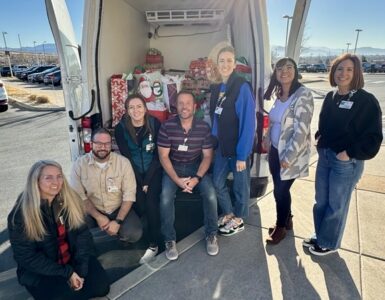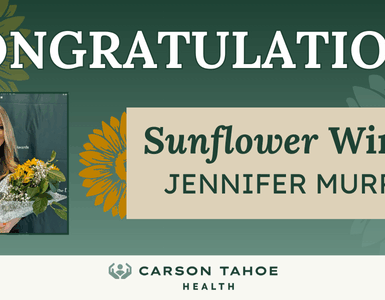Gardening in Northern Nevada can be tricky, but with a few tips from two seasoned green thumbs, you can enjoy the benefits of growing your own produce.
A dry climate, the potential for dramatic temperature swings (sometimes on the same day), a short frost-free season, and soil that needs some work can make planting and maintaining a garden in Northern Nevada seem like an impossible task. But nothing could be further from the truth, say local gardening experts Cory King, Site Manager and Garden Educator at The Greenhouse Project, and Will Pierz, Assistant Manager at The Greenhouse Project. Here, they share five tips for gardening in the high desert.
1. Pick a Spot for Your Plot
An ideal spot for your garden features protection from the wind, which can rob plants of moisture. A fence, row of trees, or tall bushes will do the trick. If you want to go a step further, plant your garden in a greenhouse or hoop house—a simple structure with a roof of plastic sheets stretched over bent pipes. Additionally, a site that offers shade is best.
“Most plants benefit from a bit of shade,” Pierz says. “If you already have trees or bushes in the yard, you may be able to use them to provide afternoon shade for your garden.”
An alternative to in-ground gardening is planting in containers, which have the advantage of being movable. Container plants, however, are more sensitive to changes in temperature, dry out quicker, and need fertilizing regularly, according to King.
2. Get to Know Your Soil
Soil testing by a local garden center can reveal what nutrients your soil needs so you can supplement accordingly in the months before the growing season. To supplement your soil, place sheet mulch on your garden plot at least six months before you plant, Pierz recommends. You can also plant a cover crop—a crop that protects against weeds, prevents soil erosion, and helps control pests—in the fall to lay the groundwork for spring gardening.
“In September or October, you can lay down mulch and plant field peas or winter rye, if you have bare soil and want to plant a garden in the spring,” King says. “Those plants will sprout in the fall and probably survive into the winter, and that provides nutrients that you can turn into the soil in spring.”
3. Choose Your Crops
Carrots, turnips, radishes, Swiss chard, spinach, bok choy, cabbage, broccoli, cauliflower, currants, goji berries, and gooseberries typically do well in Northern Nevada’s climate, according to King and Pierz. You can also grow tomatoes, squash, peppers, and eggplant, but they may require more water and protection from temperature swings.
4. Water Wisely
In this region, you can’t count on rain to meet your garden’s needs. Supplemental watering with a drip irrigation system, which you can purchase at a garden center or hardware store, is an environmentally friendly way to ensure your plants get enough water.
5. Boost Your Soil by Composting
Keep organic matter out of the landfill and add valuable nutrients to your soil by composting, a backyard practice that takes advantage of the natural process of decomposition. Getting started is simple: Pick a spot in your backyard to pile leaves, grass clippings, fruit and vegetable scraps, coffee grounds, wood chips, and other biodegradable yard and household waste. Alternatively, build a wooden bin or wire-mesh container to hold the pile. Over a period of months, bacteria and other organisms will break down the material.
“If you turn the pile every so often, that gives microbes access to all parts of it, and it will break down faster,” King says. “If you prefer a passive pile, you won’t have to worry about turning it, but it will take longer to biodegrade. When you dig into the pile about two inches and find what looks like dark, rich soil that crumbles in your hand, it’s ready to spread on your garden.”
Learn more about how Carson Tahoe Health partners with Carson City nonprofit The Greenhouse Project to manage The Foothill and Creekside Gardens at Carson Tahoe Regional Medical Center.







